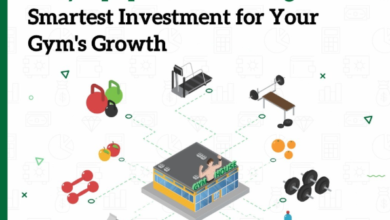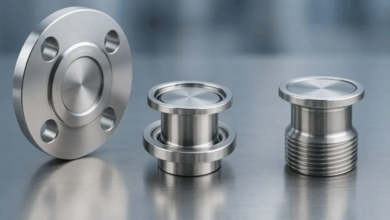Types of Vacuum Generators Explained: Blowers, Vacuum Ejectors, and Vacuum Pumps

When it comes to creating suction power in industrial applications, vacuum ejectors play a crucial role alongside blowers and vacuum pumps. These devices are essential for processes like material handling, packaging, and automation, where maintaining consistent vacuum pressure is crucial to efficiency. This article explains the types, functions, advantages, and ideal applications of vacuum generators, blowers, ejectors, and pumps.
Understanding Vacuum Generation
A vacuum forms when air or gas is removed from a sealed space, lowering the pressure inside compared to the outside. This pressure difference produces suction or lifting power, which is widely used in industries such as automation, packaging, and material handling.
Key Parameters
- Vacuum Level: It measures how much the air pressure is lowered compared to normal atmospheric pressure. A higher vacuum level means stronger suction, allowing the system to hold or move objects more effectively.
- Flow Rate: Measures how much air is removed per second or minute, showing how quickly the vacuum can be created or maintained.
- Efficiency: Describes how well a vacuum system works in relation to the energy it consumes. A more efficient system achieves the needed vacuum level while using less power or compressed air.
Vacuum generation involves managing air pressure and flow to create suction. Choosing between a blower, ejector, or pump depends on your needs.
Blowers
Blowers create a vacuum by displacing air using rotating impellers. As the impeller spins, it draws air into the chamber and forces it out, reducing the pressure inside and creating suction.
There are two main types:
- Regenerative Blowers: These devices move air in a circular motion around the impeller blades, giving the air extra energy with each pass. This makes them ideal for applications that need a steady, moderate vacuum level.
- Side Channel Blowers: They use specially curved impellers and side channels to compress and move air smoothly. This design provides a consistent airflow with very little vibration or pulsation.
Advantages
- Can operate continuously without overheating, making them suitable for long-term industrial use.
- Able to handle large volumes of air efficiently, which is ideal for applications like material conveying or drying processes.
- No internal contact parts and no need for lubrication, which reduces maintenance and increases reliability.
- Quiet operation, making them suitable for environments where noise is a concern.
- Simple and durable design, leading to fewer breakdowns and longer service life.
Limitations
- Can only achieve low to medium vacuum levels; they are not suitable for tasks that need a strong or deep vacuum.
- Less effective for precise applications that require a stable high vacuum.
- Performance can drop if the system has leaks or long suction lines.
- Not ideal for applications with high moisture, dust, or particulate content, as this can affect airflow and efficiency.
Typical Applications
- Material conveying systems.
- Drying and cooling processes in manufacturing.
- Air knife systems and aeration tanks are used where steady airflow is needed.
Vacuum Ejectors
Vacuum ejectors use the Venturi effect to create suction. When compressed air passes through a narrow nozzle, it accelerates and lowers the pressure, generating a vacuum. This method produces suction without any moving parts, making ejectors simple and reliable.
Types of Vacuum Ejectors
- Single-stage ejectors: These are simple, small, and quick to operate, making them ideal for light or basic vacuum tasks.
- Multi-stage ejectors: Use several nozzles arranged in sequence to create a stronger vacuum and improve airflow efficiency.
- Integrated ejectors: These ejectors have built-in sensors, valves, or controllers, allowing for smart automation and precise control of the vacuum process.
Advantages
- Lightweight and compact, making them easy to install even in small or tight spaces.
- No moving parts, which means very low maintenance and minimal risk of mechanical failure.
- Fast response, ideal for quick suction tasks like pick-and-place automation.
- Quiet operation compared to mechanical pumps, which is beneficial in noise-sensitive environments.
- Can be combined with sensors, valves, or controllers in integrated ejectors for precise and automated vacuum control.
- Flexible for intermittent or on-demand use, reducing energy consumption when not continuously needed.
Limitations
- It can consume a lot of compressed air, increasing operational costs.
- Efficiency depends on air supply pressure and system design.
Vacuum ejectors provide fast, reliable suction in compact systems like robots and packaging machines.
See also: Boost Website Performance Through Smart Web Design Techniques
Vacuum Pumps
Vacuum pumps create suction using mechanical displacement methods. They remove air or gas from a chamber using moving parts such as rotary vanes, diaphragms, screws, or pistons to produce a steady and consistent vacuum.
Types of Vacuum Pumps
- Rotary Vane Pumps: These are oil-lubricated pumps ideal for medium vacuum applications, providing reliable performance and consistent vacuum levels.
- Dry Pumps: These pumps work without oil, delivering a clean vacuum ideal for sensitive or contamination-free environments.
- Liquid Ring Pumps: These pumps create a vacuum using a rotating liquid seal. This design makes them ideal for handling moist, dirty, or vapor-filled gases efficiently and safely without causing damage.
Advantages
- Provides strong and consistent vacuum levels, ensuring precise and reliable operation for sensitive or high-demand processes.
- Highly efficient and durable, suitable for continuous, long-term industrial use.
- Capable of handling demanding applications, including chemical processing, vacuum forming, and central vacuum systems.
- Performs well even in harsh environments, including high humidity, dust, or high-temperature conditions.
Limitations
- Typically larger and heavier than other vacuum generators.
- Require higher maintenance and have a higher initial cost.
- More complex to operate than simple ejectors or blowers.
Typical Applications
- Vacuum forming in plastics and packaging.
- Chemical processing requires precise vacuum control.
- Central vacuum systems in manufacturing or lab setups.
Best suited for applications that require a strong and steady vacuum, such as industrial or chemical processes. However, they are usually larger, more expensive, and require more maintenance than blowers or ejectors.
Choosing the Right Vacuum Generator
Selecting the right vacuum generator depends on your required vacuum level, response time, energy efficiency, and maintenance considerations. Here’s a quick guide:
- Vacuum Level Requirements
Determine how strong a vacuum your application needs:
- High vacuum: Use vacuum pumps for strong suction and precise control.
- Medium vacuum: Use ejectors, which provide a balanced combination of performance, simplicity, and reliability for most general vacuum applications.
- Low vacuum: Use blowers, ideal for gentle suction tasks or applications that require moving large amounts of air efficiently.
- Energy Efficiency
Consider how much energy your system uses:
- Pumps are generally more energy-efficient.
- Ejectors rely on continuous compressed air, which can increase energy costs if used for long periods.
- Maintenance Needs
Think about how much maintenance you can handle:
- Ejectors need almost no maintenance since they have no moving parts.
- Pumps and blowers require regular maintenance, including filter cleaning or replacement.
- Operational Environment
Match your choice to your working conditions:
- Ejectors are best for clean, controlled environments.
- Pumps and blowers perform well even in dusty, humid, or demanding conditions.
- Response Time
If your process needs fast vacuum generation:
- Ejectors respond almost instantly, making them perfect for automation and pick-and-place operations.
Select your vacuum generator based on your application’s requirements for vacuum strength, energy consumption, maintenance effort, environmental considerations, and speed. The right choice ensures efficiency, reliability, and long-term cost savings.



